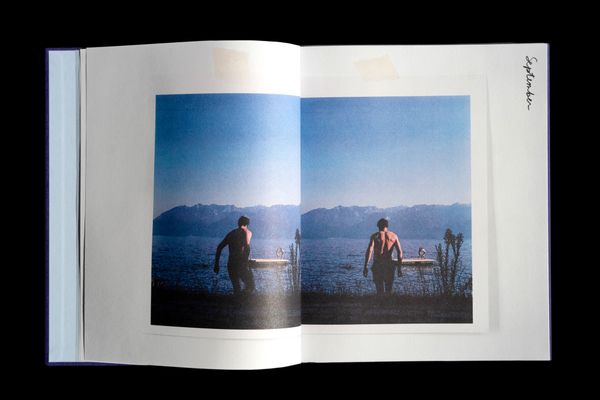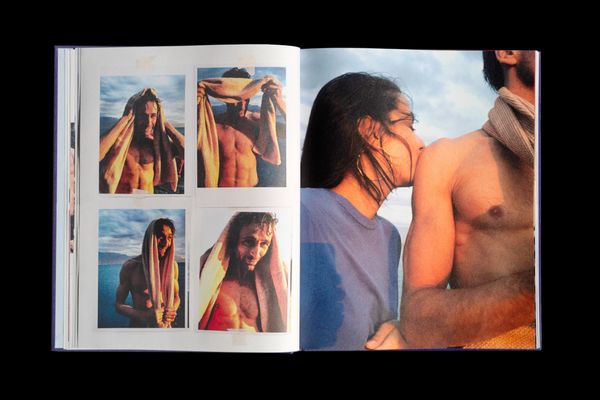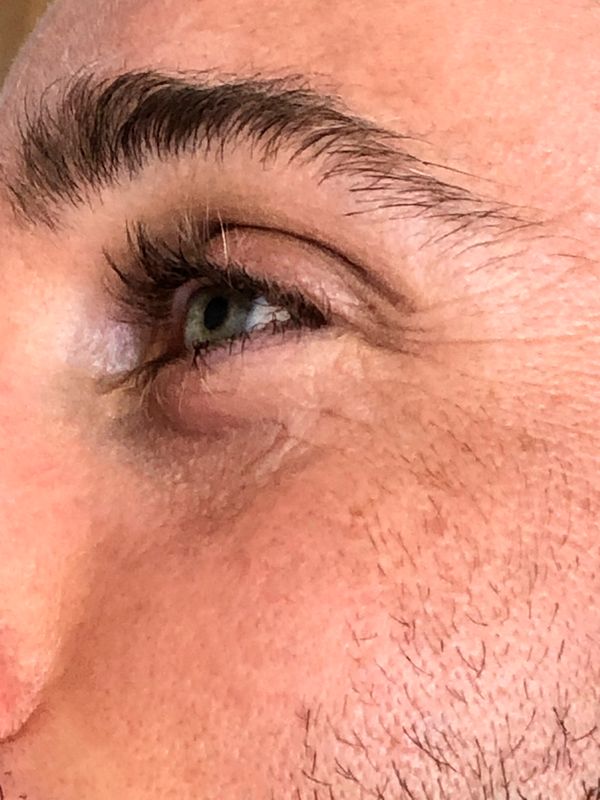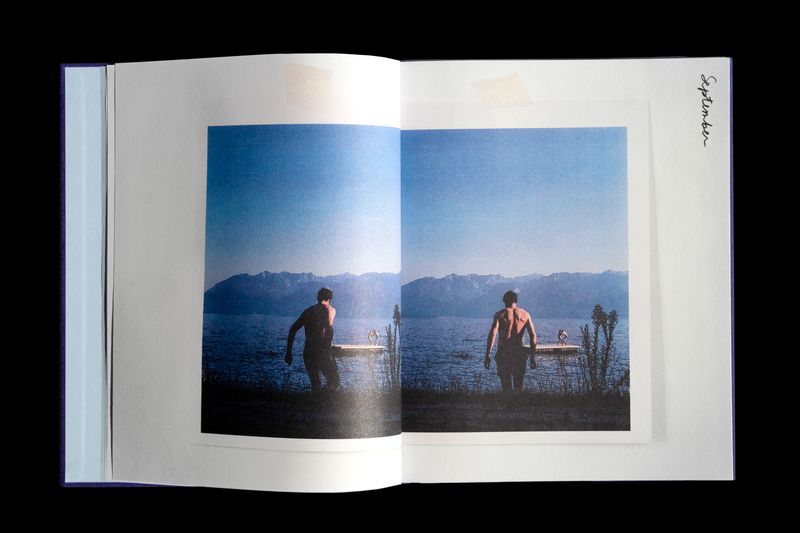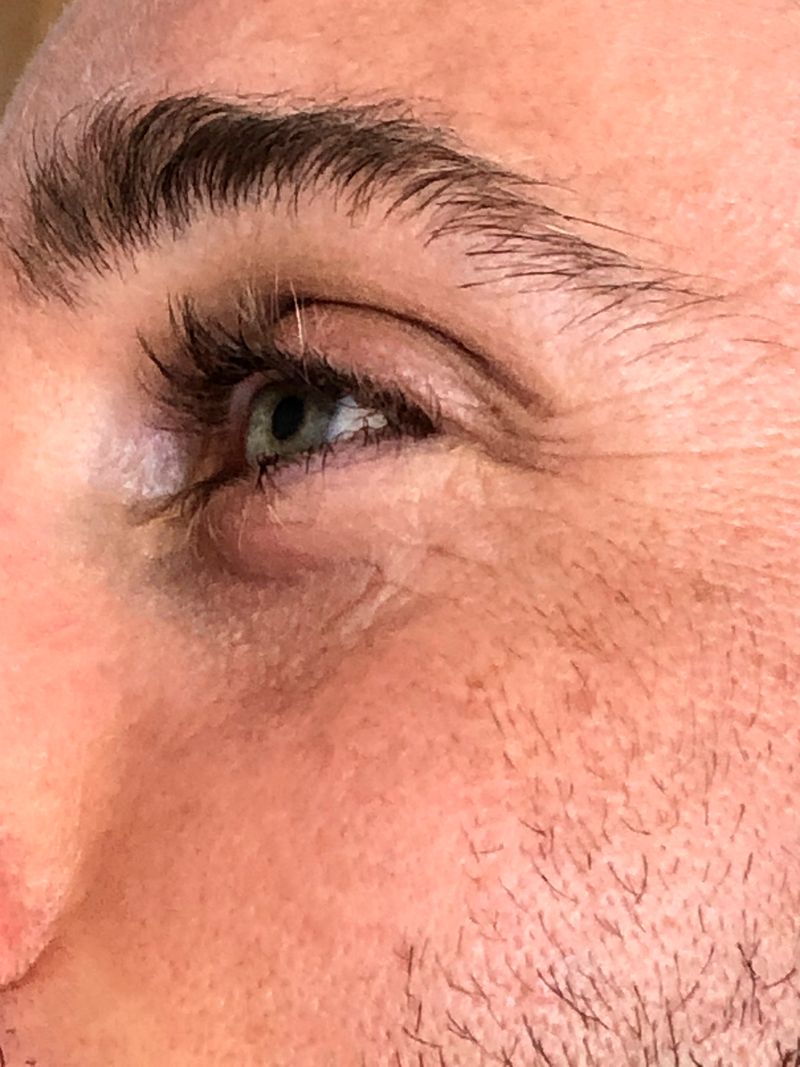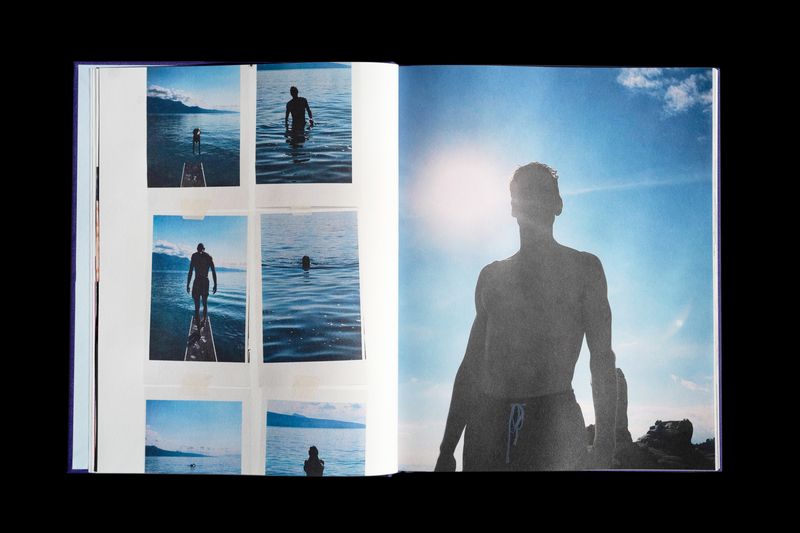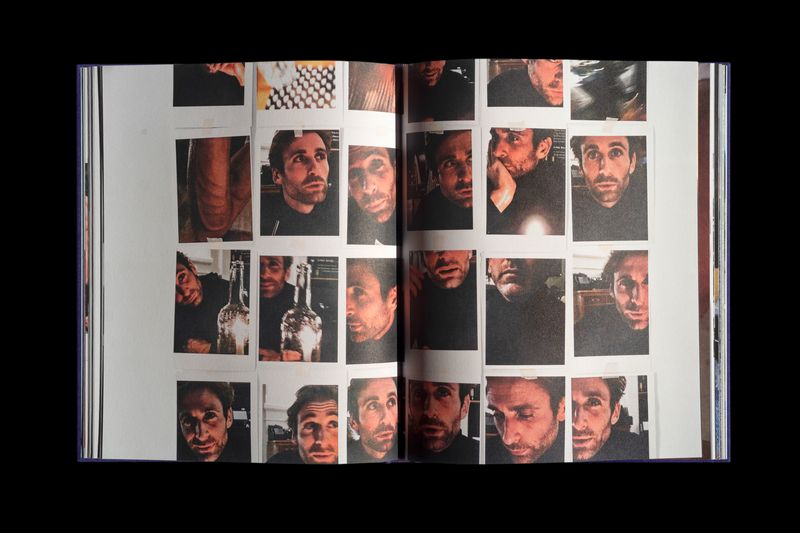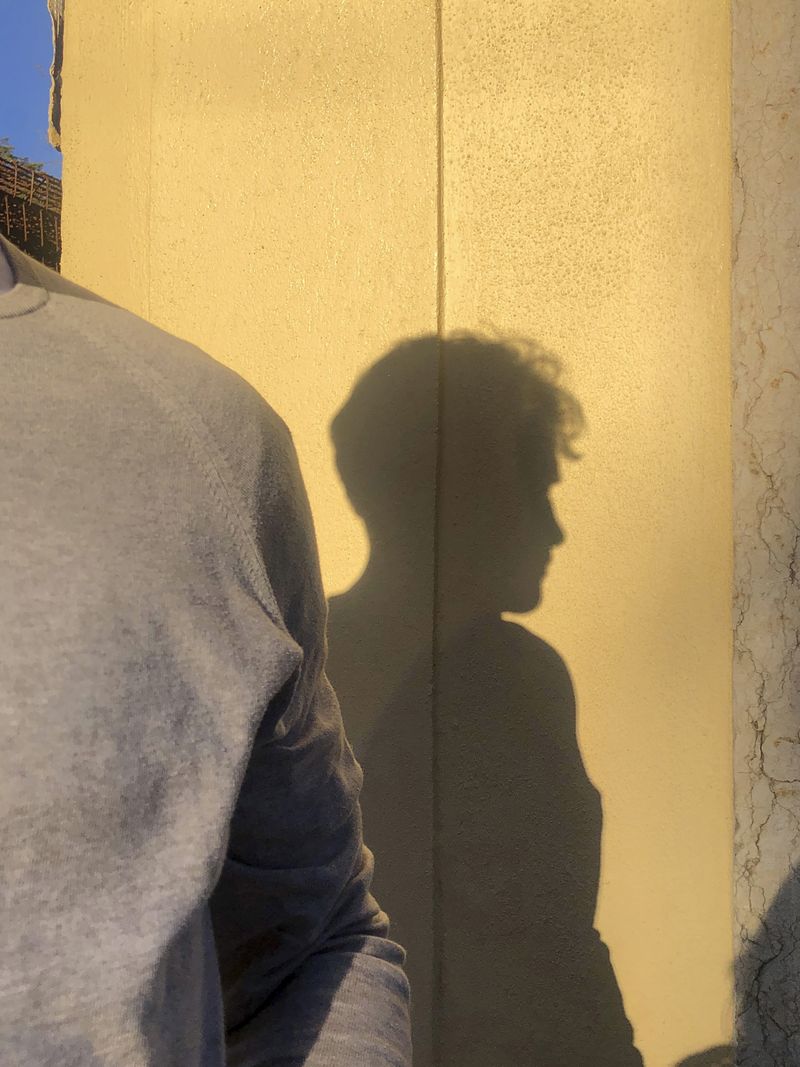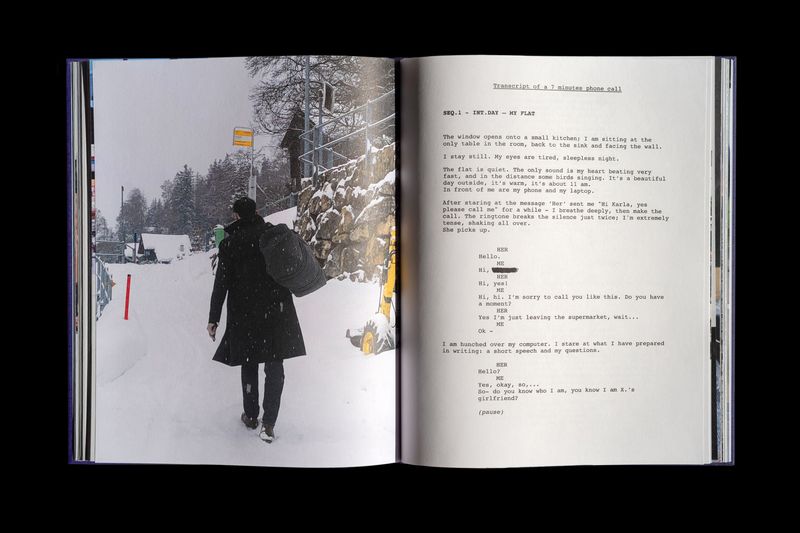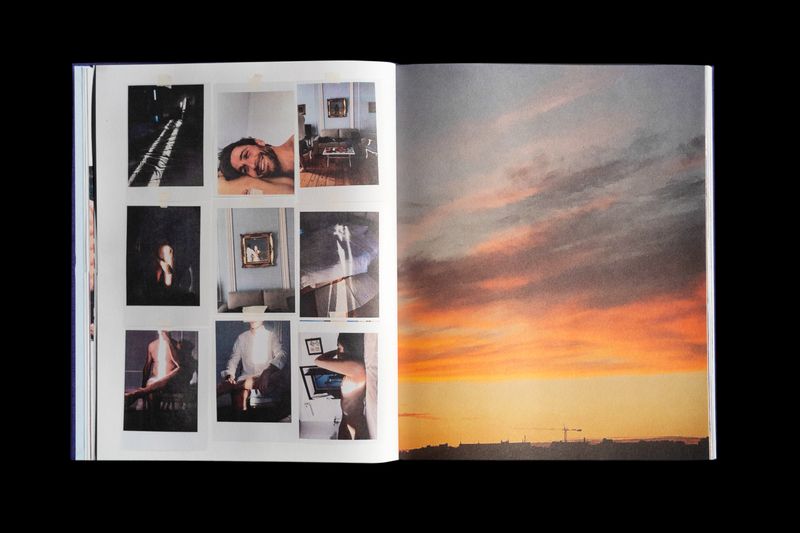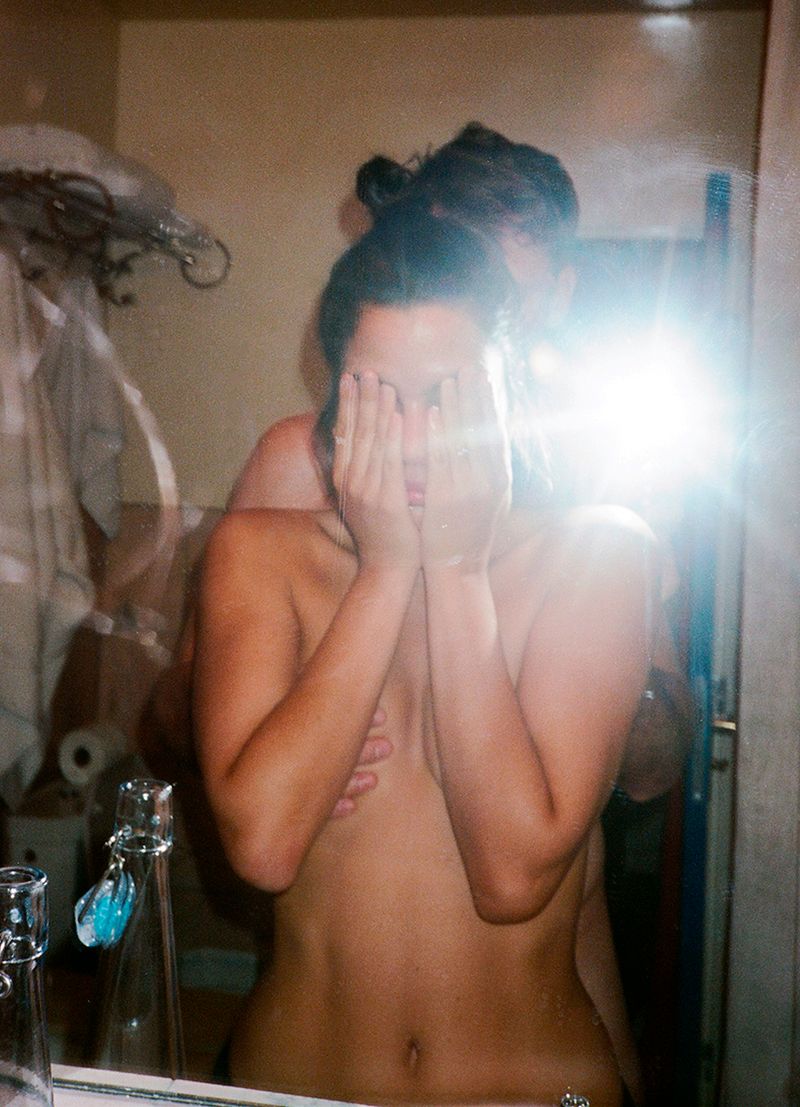Photobook Review: Another Love Story by Karla Hiraldo Voleau
-
Published16 Nov 2023
-
Author
- Topics Photobooks
Another Love Story looks at the pictures we take without thinking and shows them for what they really are. It slips inside them, it dissects them, to then stage a lie that feels truer than reality.
What happens if we glance at something usually overlooked? If we stop for a while and keep staring at it for a longer, almost awkward time? The photos we take with our smartphones pile up in a Cloud somewhere. We cherish them. We upload them on social media. Very often we forget about them.
If you look at something for too long, at some point it becomes something else. A shadow can take the shape of a living thing. A photograph can start revealing all of its layers, peeled off like an orange.
In Another Love Story by Karla Hiraldo Voleau, published this summer by Mörel, fiction and truth, spontaneity and stereotypes pile on top of one another like geological strata. The first picture of the book is an SMS screenshot: Hiraldo Voleau has discovered that her boyfriend has a double life, and she's now texting a woman. X - her former partner’s fictional name - has been having another relationship for a while. He and “Her” live together. They have a cat, a group of friends and a routine in another city.
The photographs that follow are taken with Hiraldo Voleau's phone camera. They look spontaneous and unconstructed. In them are personal, everyday moments - a dinner, X diving into the sea, Karla and him in bed - split over several shots. They are printed on low-quality office paper, taped on a wall, arranged in chronological order. “With the truth in mind, the number of picture-perfect photographs of X and I on my phone looked completely horrifying”, she says. “How happy we looked, how beautiful he looked, how loving he looked towards me. It really made me shiver”. Though, the X in this book isn’t the real X. He’s an actor, Pierre, who happens to look very much like him. All the printed-out memories are doubles of an original - Karla and Pierre have been traveling around, visiting the same exact places she’d been with X during their one-year relationship, and taking the same exact pictures stored in her phone.
What happens if you stage something intimate, something fleeting? What happens if you perform spontaneity, purposefully appropriating its sloppy aesthetic - and what happens if the object of this performance is your own private, recent trauma? “It was a freeing technique, and an outlet to digest everything. The new images could not hurt. They did not belong to “us” as a former couple, but just to me. I could own the story alone, again. Or not again, but for the first time, actually”.
These fake photographs feel truer than the real ones. First, they portray something that is, in a way, more real: “When things like this happen you think everything is a lie, you don’t trust your own instinct and you don’t trust your own memories, you don’t know what was true. Going back there with someone new who wasn’t being deceitful made me feel that finally what I saw was what I got - there was no other layer. I was there, now conscious of the reality of what had happened before - it was the truest moment of it all”. But there’s more to it. These images are somehow truer to their nature - photographs meant for online platforms where our life is staged, here finally staged for real. With their aesthetic being shaped by social media, a place where nothing is ever as it looks, this fake, constructed process ends up fitting them perfectly, maybe making the most coherent images we might have seen in a while.
Four spreads show X/Pierre’s face repeated all over. One of them is enlarged, full bleed. “I photographed the clouds of images getting closer, then further, zooming in and out. I was acting a bit like a detective, trying to mimic the feeling I was having when looking through in my archive, searching for details that could be hints of what was going on”. To what extent can we dig inside a photograph? If you zoom in, at some point all you’ll get is noise and pixels. Here’s a fun thing about images: for how intensely you look at them, what they show will stay the same. But as you learn something new about them, everything can suddenly change. “When I looked through my pictures to select the ones I would recreate, I realised very quickly something quite incredible. The whole group of images was really telling of what was going on. A lot of them showed three people, all the time. Looking at their progression, the more the year passes, the more I’m starting to shoot X's shadow, to portray him from the back, fragmented. There are some pics where I’m trying to get close to him, but he’s not really smiling anymore. In the last month he wears sunglasses, he’s unattainable. The photographs don’t mean a thing. But how I’m looking at him, the progression in my gaze at him, is telling a lot”.
The pictures we take without thinking are more than what we believe. Just like all photographs, they are speaking a language. They have symbols, they bear signs. Some are about the people in them, some about the people who took them, some are telling of society as a whole. “There are some very specific codes of what being happy and successful looks like. One of them is being in a long-term, unproblematic relationship. I’m always looking at couple vloggers, or celebrities, or couple-whatever on Instagram, wondering what’s really behind the screen. It’s unfortunately a more and more common facade that we put on by default”, says Hiraldo-Voleau.
Somewhere between Hiraldo-Voleau's true images of a lie is a very spontaneous statement on the nature of photography. There’s all of its power - as a tool for creating memory, as a tool for twisting it, as material that can lie, or help us unmask a lie. As something we can be haunted by, or something we can be in charge of. As something that can deceive us, something whose magic can be neutralized, whose meaning can be reversed. Ultimately, as a means to shape stories - a tool to write narratives.
Unlike the narrative of her relationship, the one in this book is under the photographer’s control. She’s directing it, dictating how we feel about it. The SMS at the beginning gives us a clue of something wrong - but it’s a phone conversation’s transcript between Karla and “Her”, placed in the middle, that unveils the whole story. Funny enough, this piece of content is designed like a script. A script is something fake, where everything is directed. Of the entire book, though, this is the purest content: the least controlled and the most unexpected, the one that could not be planned at all. “I tried to blur fiction and reality through every detail, because that’s exactly what the relationship was. Everything is meant to play around with the codes of fiction and non-fiction, emphasizing the narrative aspect - a script is for movies, there’s a beginning, there’s a cliffhanger towards the end…”. Eventually, it is just a story. With characters that play it, and a viewer that looks at it unfolding.
--------------
Another Love Story is published by Mörel
Edition of 750
144 pages
20 x 25 cm
ISBN 978-1-907071-96-6
--------------
All photos © Karla Hiraldo Voleau
--------------
Karla Hiraldo Voleau (b.1992) is a French- Dominican artist who lives and works in Lausanne, Switzerland. She graduated from ECAL, Lausanne, with a master’s degree in Photography in 2018. She participated in the 2020 edition of the Foam Talent and Olympus Recommended Fellowship. She has exhibited work across Europe and the US, including International Center for Photography, New York and Maison Européenne de la Photographie, Paris.
Camilla Marrese (b.1998) is a photographer and designer based between Italy and The Netherlands, graduated from MA Information Design at Design Academy Eindhoven (NL). Her practice intersects documentary photography, design for publishing and writing, aiming for the expression and visual articulation of complex issues.
